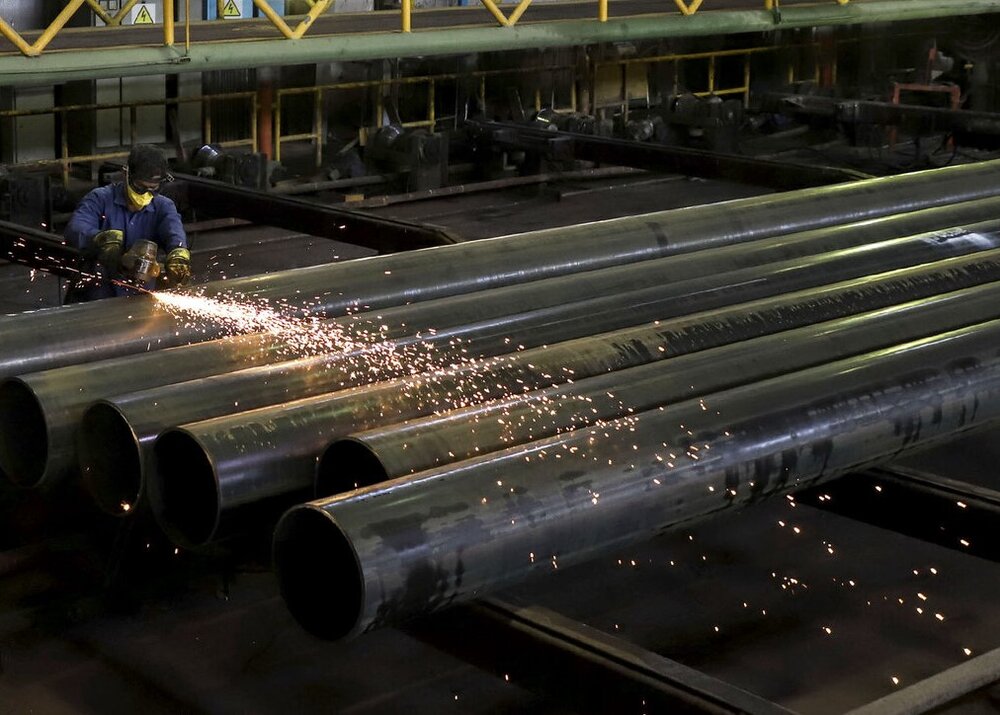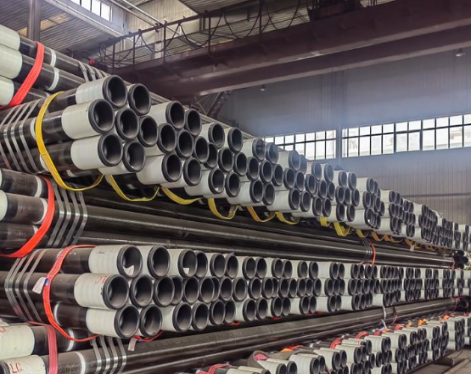The welding stress of the steel pipe is the stress generated by the welding of the seamless pipe or the welded steel pipe.
Welding residual stress has six influences on steel pipes.
1. Influence on strength: If there are serious defects in the high residual tensile stress area, and the steel pipe works below the brittle transition temperature, the welding residual stress will reduce the static load strength. Under the action of cyclic stress, if there is residual tensile stress at the stress concentration point, the welding residual tensile stress will reduce the fatigue strength of the weldment.
2. Influence on stiffness: The superposition of welding residual stress and stress caused by external load may cause local early yield of weldment and produce plastic deformation. The stiffness of the tube will thus be reduced.
3. Influence on the stability of pressure welded parts. When the weldment is under pressure, the welding residual stress and the stress caused by the external load are superimposed, which may cause the local yield of the pipe or the local instability of the pipe, and the overall stability of the rod will be reduced. The effect of residual stress on stability depends on the tube geometry and internal stress distribution. Residual stresses have a greater effect on pipes with unclosed sections (such as I-shaped sections) than closed sections (such as box sections).
4. Influence on machining accuracy: The existence of welding residual stress has varying degrees of influence on the machining accuracy of weldments. The smaller the stiffness of the weldment, the greater the processing volume, and the greater the impact on accuracy.
5. Influence on dimensional stability: The welding residual stress changes with time, and the size of the weldment also changes accordingly. The dimensional stability of the weldment is in turn affected by the stability of the residual stress.
6. Effect on corrosion resistance: Welding residual stress can also cause stress corrosion cracking just like loading stress.

Welding stress relief and adjustment
In order to eliminate and reduce welding residual stress, a reasonable welding sequence should be adopted, and the weld with large shrinkage should be welded first. Properly reduce the stiffness of the weldment during welding, and locally heat the appropriate part of the weldment, so that the weld can shrink relatively freely to reduce the residual stress. Heat treatment (high temperature tempering) is a common method to eliminate welding residual stress. Overall heat treatment for stress relief is generally better than local heat treatment. welding
Welding residual stress has six influences on steel pipes.
1. Influence on strength: If there are serious defects in the high residual tensile stress area, and the steel pipe works below the brittle transition temperature, the welding residual stress will reduce the static load strength. Under the action of cyclic stress, if there is residual tensile stress at the stress concentration point, the welding residual tensile stress will reduce the fatigue strength of the weldment.
2. Influence on stiffness: The superposition of welding residual stress and stress caused by external load may cause local early yield of weldment and produce plastic deformation. The stiffness of the tube will thus be reduced.
3. Influence on the stability of pressure welded parts. When the weldment is under pressure, the welding residual stress and the stress caused by the external load are superimposed, which may cause the local yield of the pipe or the local instability of the pipe, and the overall stability of the rod will be reduced. The effect of residual stress on stability depends on the tube geometry and internal stress distribution. Residual stresses have a greater effect on pipes with unclosed sections (such as I-shaped sections) than closed sections (such as box sections).
4. Influence on machining accuracy: The existence of welding residual stress has varying degrees of influence on the machining accuracy of weldments. The smaller the stiffness of the weldment, the greater the processing volume, and the greater the impact on accuracy.
5. Influence on dimensional stability: The welding residual stress changes with time, and the size of the weldment also changes accordingly. The dimensional stability of the weldment is in turn affected by the stability of the residual stress.
6. Effect on corrosion resistance: Welding residual stress can also cause stress corrosion cracking just like loading stress.

Welding stress relief and adjustment
In order to eliminate and reduce welding residual stress, a reasonable welding sequence should be adopted, and the weld with large shrinkage should be welded first. Properly reduce the stiffness of the weldment during welding, and locally heat the appropriate part of the weldment, so that the weld can shrink relatively freely to reduce the residual stress. Heat treatment (high temperature tempering) is a common method to eliminate welding residual stress. Overall heat treatment for stress relief is generally better than local heat treatment. welding









